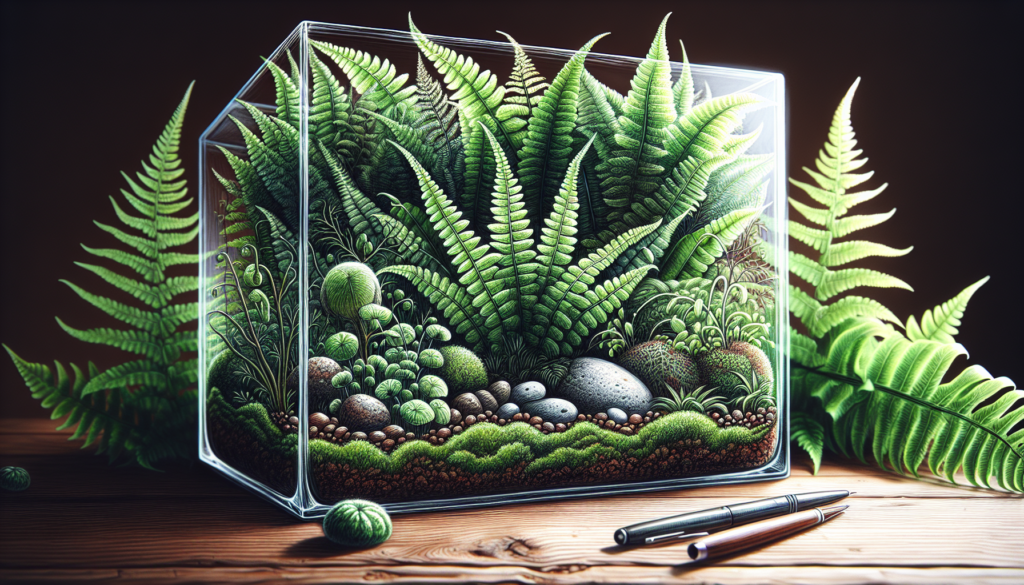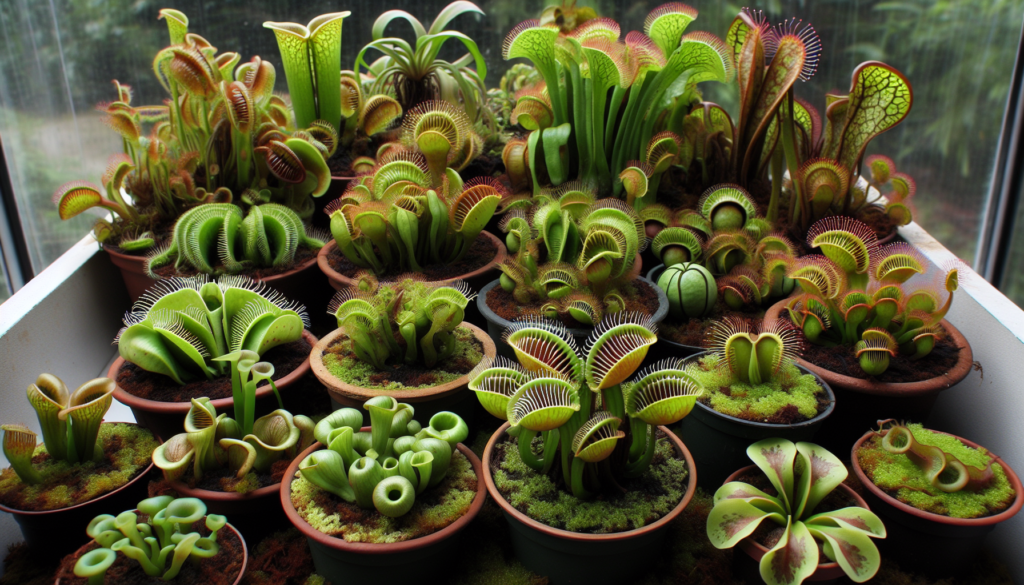English Ivy, an evergreen vine, showcases a stunning appearance that can enhance the beauty of any garden. Its lush trailing vines can reach up to 60 feet in height when given the opportunity to climb, creating an impressive vertical display. The vine forms a dense mat of growth, providing a sense of fullness and richness to your landscape.
Appearance of English Ivy

English Ivy features two distinct types of leaves. The creeping and climbing stems bear lobed leaves, which add a unique texture to the plant. On the other hand, the fertile flowering stems produce unlobed leaves. These leaves are deep green and remain evergreen throughout the year, ensuring your garden stays vibrant and lively even during the colder months.
During the fall season, English Ivy surprises with a burst of color. The foliage can turn a deep scarlet, adding a beautiful contrast to the greens in your garden. This stunning transformation further highlights the versatility and visual appeal of this evergreen vine.
Light Requirements for English Ivy
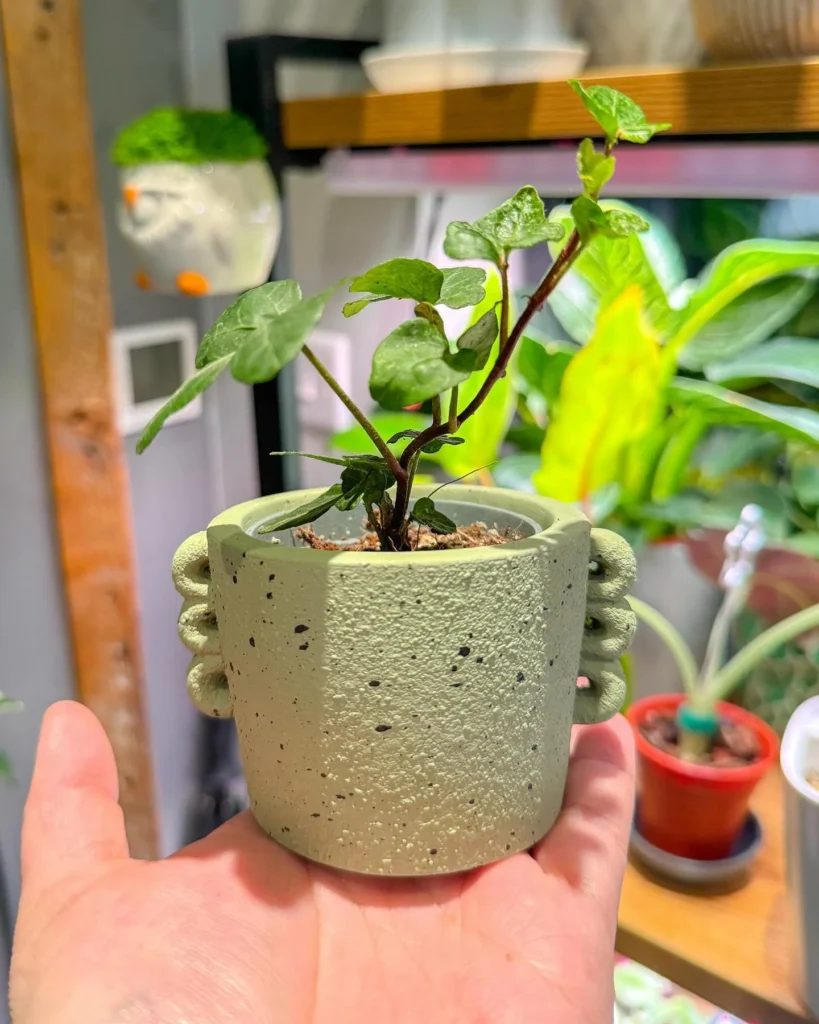
When planting English Ivy in your garden, it is essential to consider its light requirements for optimal growth. While English Ivy can tolerate full shade, it prefers areas with full sun to partial shade. In full shade, the vine may not grow as rapidly as it would in areas with more sunlight.
If you want to create a beautiful climbing vine, it is best to plant English Ivy near a wall, building, or trellis where it can receive ample sunlight. The vine will naturally gravitate towards vertical surfaces and use them to climb and grow. This not only adds visual interest to your garden but also maximizes the growth potential of English Ivy.
On the other hand, English Ivy can also be grown as a ground cover in areas with full sun or partial shade. So, if you have a sunny spot in your garden where you would like to create a lush, green carpet, English Ivy is a great choice. It can provide year-round beauty and help prevent soil erosion in these areas.
Whether you choose to let English Ivy climb or use it as a ground cover, it’s essential to ensure that the plant receives the appropriate amount of light for its growth requirements. Finding the right balance of sunlight will help your English Ivy thrive and enhance the overall beauty of your garden.
Watering English Ivy

This section will provide guidance on watering English Ivy to ensure its healthy growth in your garden. Proper watering practices are essential to maintain the health and beauty of your English Ivy plants.
Light Watering for Establishment
When you first plant English Ivy, it’s important to water it lightly until it becomes established. By doing so, you are promoting healthy root development and encouraging the ivy to settle into its new environment. Aim to provide sufficient moisture without overwatering.
Monitor Rainfall Levels
English Ivy generally requires about an inch of rainfall per week for optimal growth. It’s a good idea to keep track of the amount of rainfall your garden receives. If you meet or exceed the recommended rainfall amount, there is no need to water the ivy. However, in periods of extreme heat or drought, additional watering may be necessary.
Established Ivy: Drought-Tolerant but Avoid Overwatering
Once your English Ivy is established, it becomes relatively drought-tolerant. The ivy’s deep root system allows it to access moisture from the soil effectively. As a result, frequent watering is not required. It’s important to be cautious about overwatering, as it can lead to root rot and other problems. Allow the soil to dry slightly between watering sessions to prevent excessive moisture accumulation.
Signs of Water Stress
It’s important to monitor your English Ivy plants for signs of water stress. If the leaves start to wilt or turn yellow, it may be an indication that the ivy is not receiving enough water. Adjust your watering routine accordingly to provide adequate hydration for the plants.
Fertilizing English Ivy
To keep your English Ivy healthy and thriving, fertilization is not typically required. This low-maintenance plant can flourish without much intervention. However, if you wish to provide some additional nutrients, a small application of slow-acting nitrogen fertilizer in the spring can help promote growth.
It is important to use fertilizer sparingly, as over-fertilizing can lead to excessive growth and make the ivy more susceptible to pests and diseases. English Ivy is naturally resilient and can thrive with minimal fertilization. The key is striking a balance to ensure its health and longevity.
Potting English Ivy
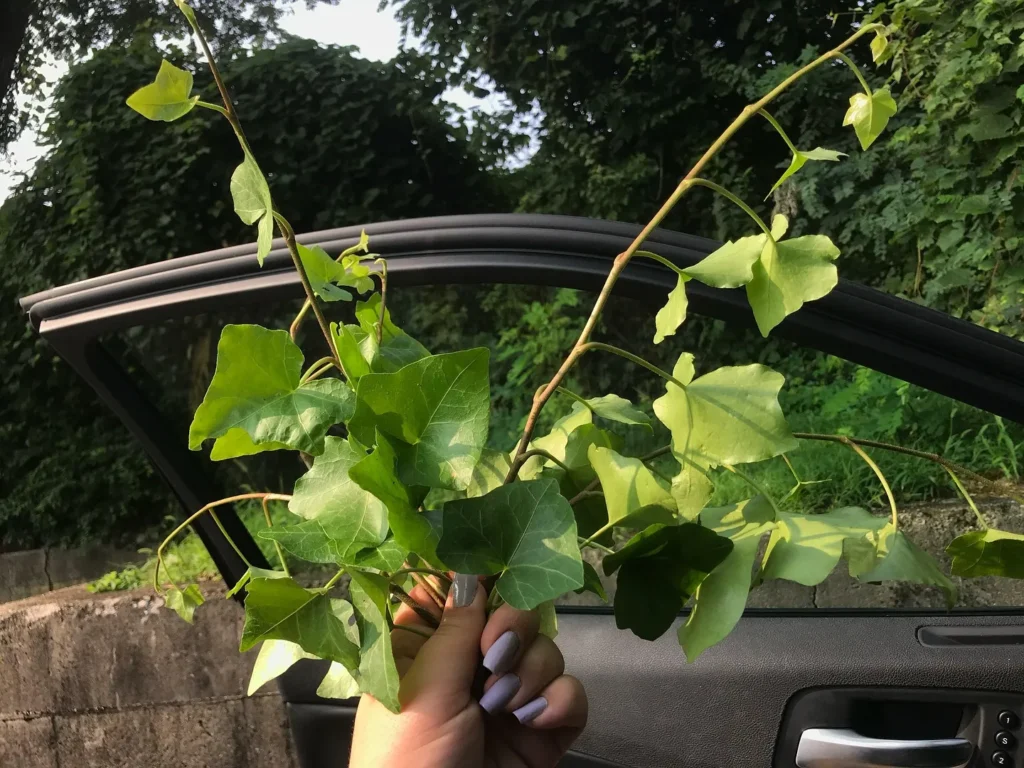
If you want to enjoy the beauty of English Ivy indoors or add it to your outdoor containers, potting it is a great option. Here are some essential tips for successfully potting English Ivy:
- Choose a well-draining soil mix: English Ivy prefers soil that drains well to prevent waterlogging. Look for a high-quality potting mix specifically designed for container plants.
- Select a container with drainage holes: It’s crucial to use a pot with drainage holes to allow excess water to escape. This ensures that the roots have access to oxygen and prevents the risk of root rot.
- Consider the pot size: English Ivy is adaptable and can thrive in various pot sizes. However, it’s important to choose a container that allows for future growth. A slightly larger pot will provide room for the plant to expand its root system.
- Thoroughly water after potting: Once you’ve potted your English Ivy, give it a good soak to help settle the soil and encourage root establishment.
- Monitor soil moisture levels: English Ivy prefers consistently moist but not soggy soil. Check the moisture level regularly and water when the top inch of the soil feels dry.
Propagation of English Ivy
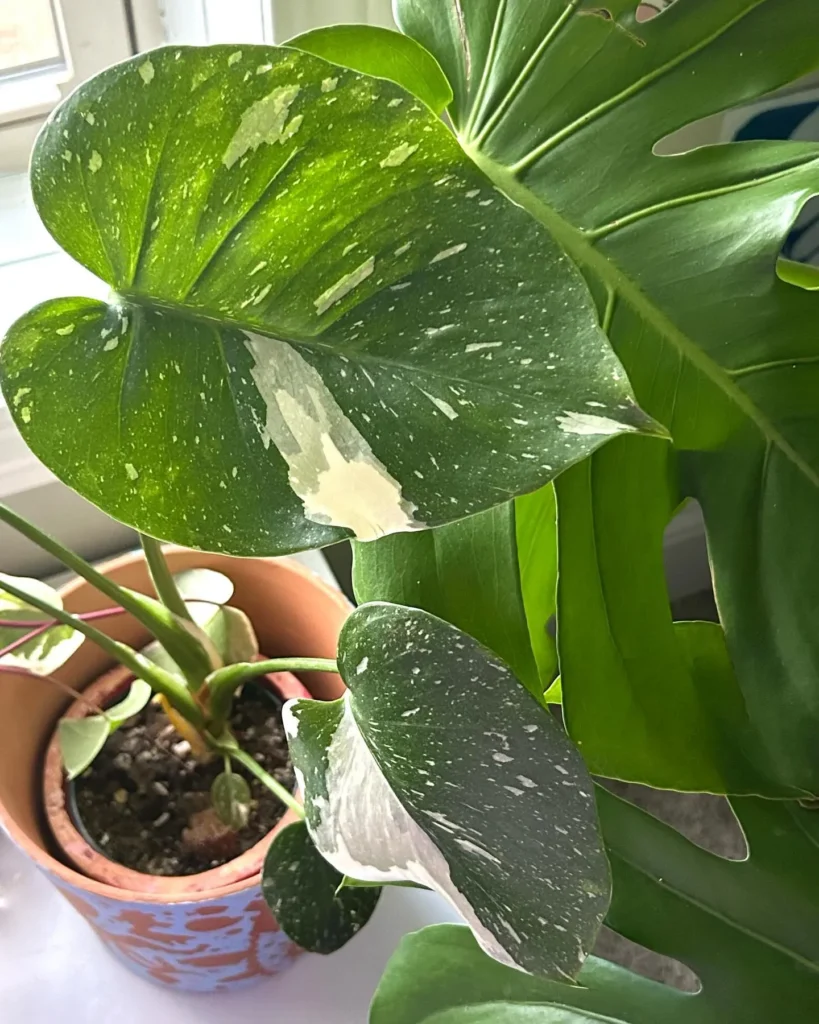
English Ivy can be easily propagated using two common methods: stem cuttings and division. These propagation techniques allow you to create new English Ivy plants for your garden or share them with fellow gardening enthusiasts.
1. Stem Cuttings
To propagate English Ivy through stem cuttings, follow these steps:
- Select a healthy, mature English Ivy plant.
- Using a clean and sharp pair of pruning shears, cut a 4-6 inch stem from the parent plant.
- Remove the leaves from the lower half of the stem, leaving only a few leaves at the top.
- Dip the cut end of the stem in rooting hormone powder to encourage root development.
- Plant the stem cutting in a well-draining rooting medium, such as perlite or a mixture of peat moss and vermiculite.
- Maintain high humidity around the cutting by covering it with a clear plastic bag or placing it in a propagator.
- Place the cutting in a bright area with indirect sunlight.
- Keep the rooting medium consistently moist, but avoid overwatering.
- Within a few weeks, roots will develop, and you can transplant the new English Ivy plant into a suitable pot or garden bed.
2. Division
Propagation by division involves separating sections of an established English Ivy plant and replanting them. Here’s how to propagate English Ivy through division:
- Choose a healthy English Ivy plant with multiple stems.
- Gently dig around the base of the plant to expose the root system.
- Using your hands or a clean gardening tool, carefully separate sections of the plant, making sure each division has a good portion of roots and stems.
- Replant the divided sections in prepared soil, spacing them out according to their growth habits.
- Water the newly planted divisions thoroughly and keep the soil consistently moist until they establish roots.
Growth and Development of English Ivy
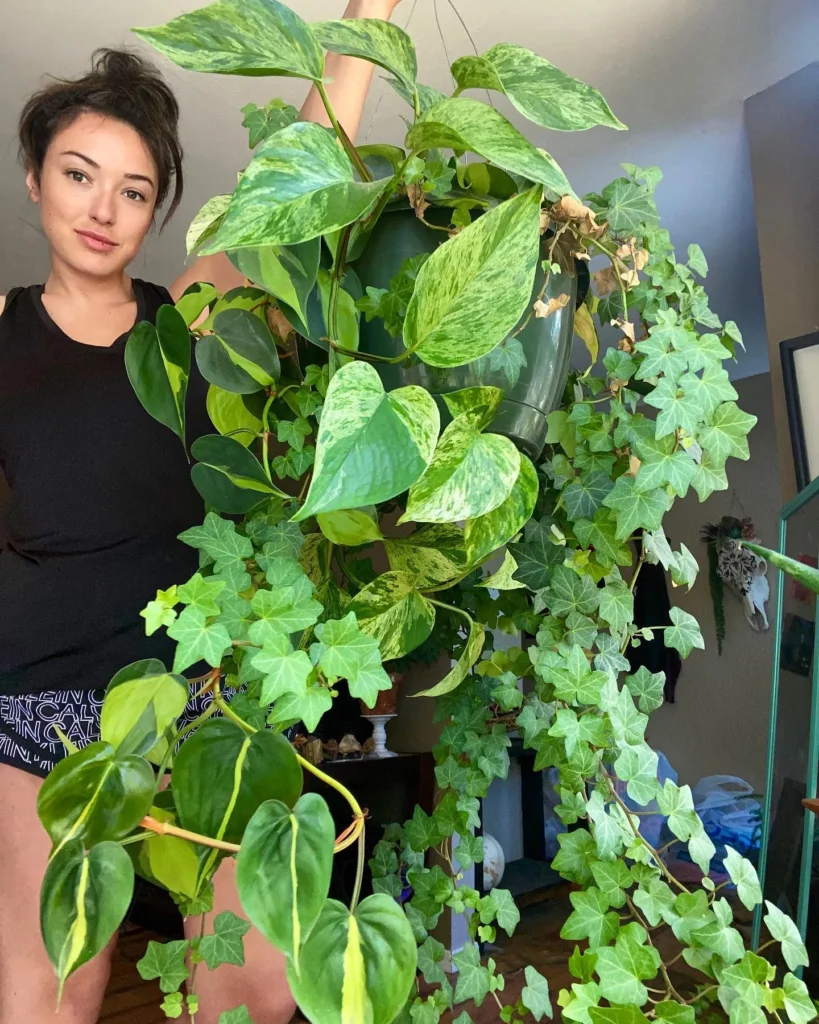
English Ivy is a fast-growing plant that can quickly cover vertical surfaces or spread as a ground cover. With its vigorous growth, it has the ability to reach impressive heights of up to 60 feet, provided it is allowed to climb. As the vine grows, it establishes roots in the ground, forming a dense and lush mat of growth. This makes English Ivy an excellent choice for preventing soil erosion and transforming bare areas into vibrant green spaces.
English Ivy is known for its adaptability and ability to thrive in various soil types. While it can tolerate different conditions, well-drained soil is preferred to ensure optimal growth and development. This versatile plant performs well in both full sun and partial shade, making it suitable for a wide range of gardening situations.
Once established, English Ivy is relatively low-maintenance and requires minimal care to continue flourishing. It is a resilient plant that can withstand periodic neglect and still thrive. With its fast growth and hardiness, English Ivy is a popular choice among gardeners looking to add greenery and beauty to their landscapes without demanding extensive attention.
Key Points
- English Ivy is a fast-growing plant that quickly covers vertical surfaces or spreads as a ground cover.
- It can reach heights of up to 60 feet when allowed to climb and forms a dense mat of growth by rooting into the ground.
- English Ivy is adaptable and can thrive in various soil types, but well-drained soil is preferred.
- Once established, it is a low-maintenance plant, requiring minimal care to continue growing and developing.
Now that you know about the growth and development of English Ivy, let’s explore its potential pests and diseases in the next section.
Pests and Diseases of English Ivy
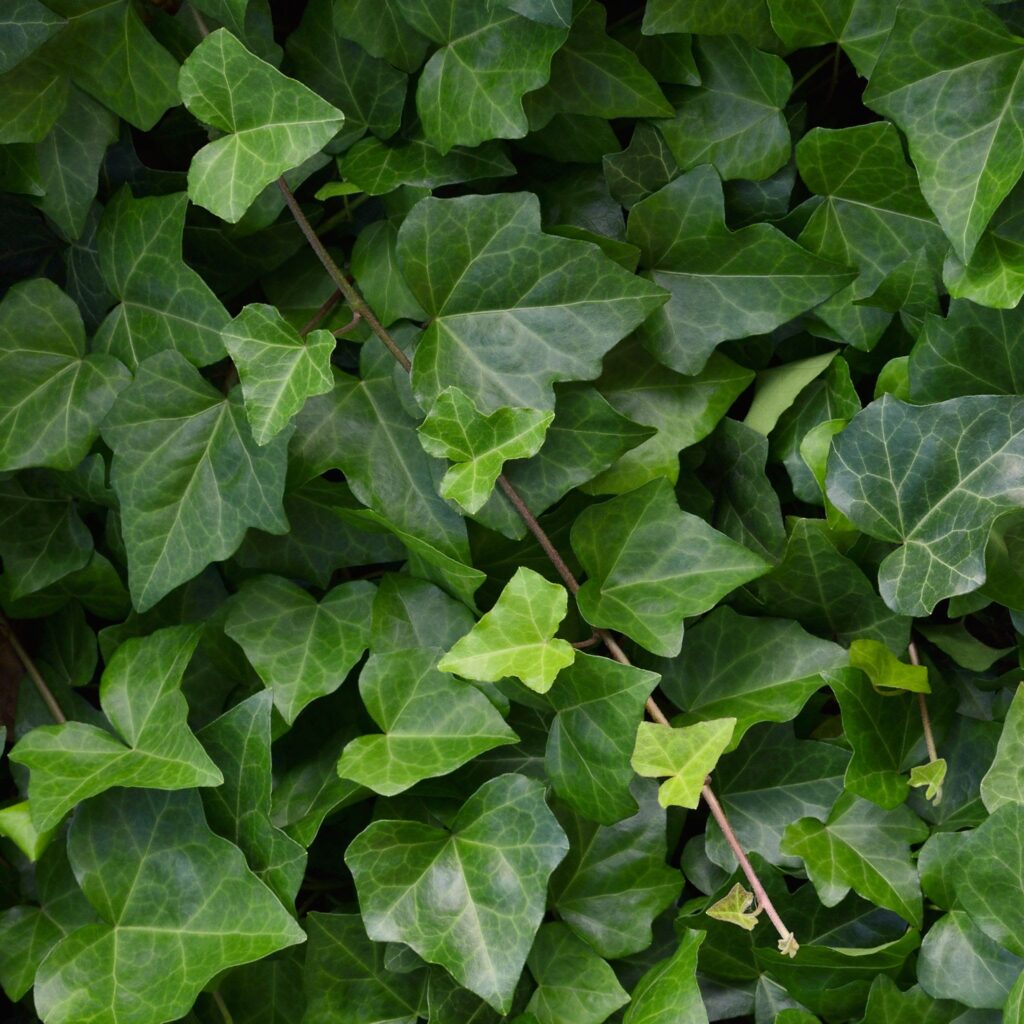
English Ivy is a resilient plant that is generally resistant to pests and diseases. However, it is not completely immune and can occasionally be affected by a few common issues that gardeners should be aware of. By understanding these potential problems, you can take proactive measures to protect the health and beauty of your English Ivy plants.
Pests
While English Ivy is relatively pest-resistant, it may sometimes attract certain insects. Some common pests that can affect English Ivy include:
- Aphids: These small, sap-sucking insects can distort the leaves and cause them to turn yellow. They can be controlled by using insecticidal soap or horticultural oil.
- Scale Insects: These pests attach themselves to the stems and leaves, feeding on the plant’s sap. They can be treated with insecticidal sprays or by physically removing them with a soft brush.
- Spider Mites: These tiny pests can cause leaf discoloration and fine webbing. Washing the leaves with water or using insecticidal soap can help control spider mite infestations.
Diseases
English Ivy can also be susceptible to certain diseases, especially in specific environmental conditions. It’s important to be aware of these potential issues to prevent them from affecting your plants.
- Root Rot: Overwatering can lead to root rot, which is caused by the growth of fungus in wet soil. To avoid this, ensure that your English Ivy is planted in well-draining soil and that you allow the top inch of soil to dry out before watering again.
- Powdery Mildew: This fungal disease can cause a white powdery coating on the leaves, often in humid conditions. Good air circulation, proper spacing between plants, and applying fungicides can help prevent powdery mildew.
- Leaf Spot: Leaf spot is another common fungal disease that can affect English Ivy. It causes dark spots on the leaves, which can eventually lead to leaf drop. Minimize leaf wetness and promote good air circulation to prevent leaf spot.
Caring for English Ivy
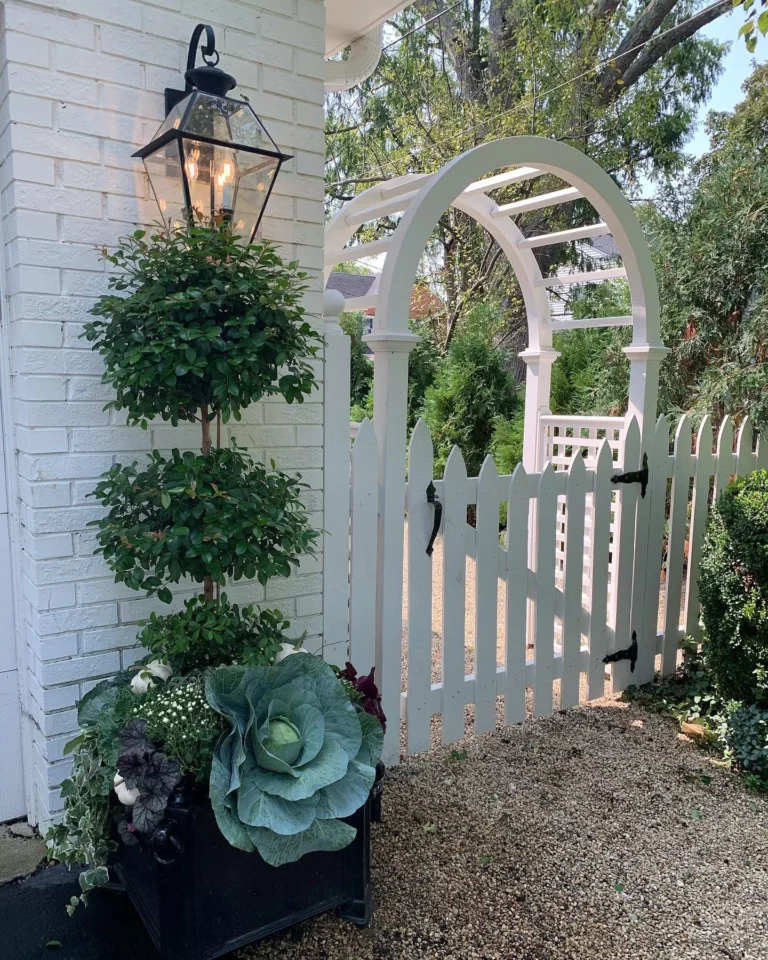
English Ivy is a beautiful and low-maintenance plant that adds lush greenery to your garden. Once established, it requires minimal care, making it an ideal choice for both seasoned gardeners and beginners. Here’s a care guide to help you ensure your English Ivy thrives:
1. Watering
English Ivy is relatively drought-tolerant and does not require frequent watering. Once established, it can withstand dry spells. Water your ivy lightly until it is established, and only provide additional water during extreme heat or drought. Avoid overwatering, as it can lead to root rot and other issues.
2. Fertilizing
English Ivy does not need frequent fertilizing. However, if desired, you can apply a small amount of slow-acting nitrogen fertilizer in the spring. Be cautious not to over-fertilize, as it can promote excessive growth and make the ivy more susceptible to pests and diseases.
3. Pruning
Pruning is necessary to control the growth of English Ivy and remove any dead or damaged foliage. Regular pruning helps maintain its shape and promotes better air circulation. You can also use pruning to train the ivy to climb vertically. Trim back any unwanted or overgrown vines to keep your English Ivy looking neat and tidy.
4. Pest and Disease Monitoring
English Ivy is generally resistant to pests and diseases. However, it’s essential to regularly monitor for any signs of trouble. Aphids, scale insects, and spider mites can occasionally affect English Ivy. Treat infestations with insecticidal soap or horticultural oil. Watch out for signs of root rot if you overwater the ivy. Powdery mildew and leaf spot can also occur in humid conditions. Proper watering practices and good air circulation can help prevent these diseases.
Transform Your Garden with English Ivy
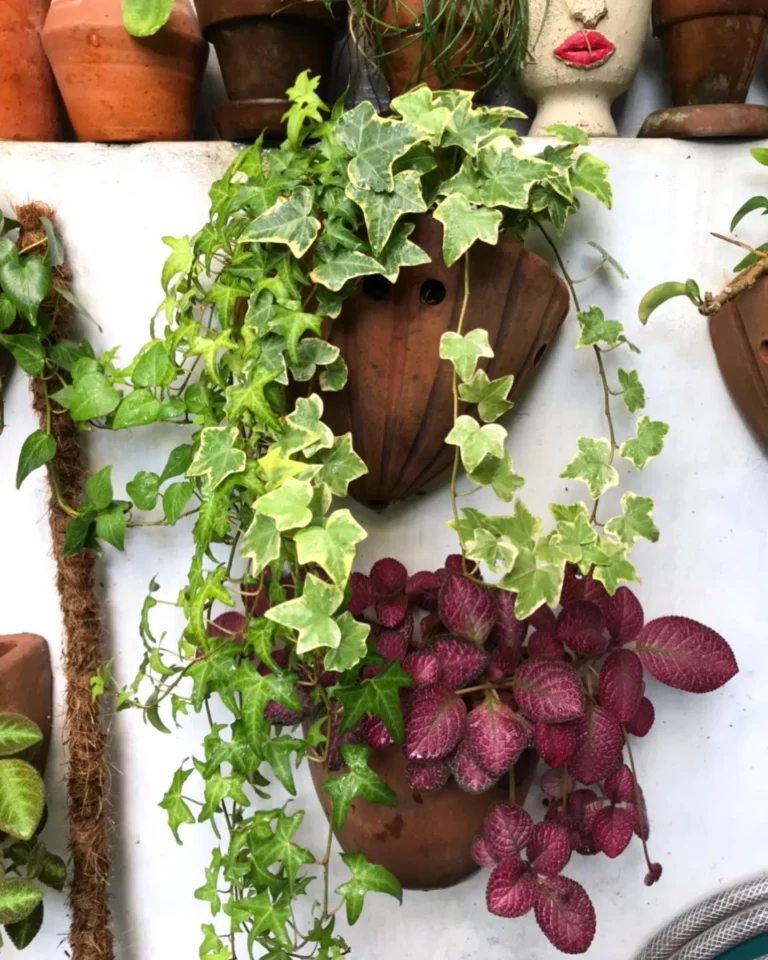
English Ivy, with its lush, evergreen beauty, has the power to transform your garden into a charming and elegant oasis. Whether you choose to use it as a ground cover, a climbing vine, or in containers, English Ivy adds a touch of grace and classic allure to any outdoor space.
The versatility of English Ivy makes it a perfect choice for transforming your garden. As a ground cover, it forms a dense mat of growth, creating a carpet of green that adds depth and visual interest to your landscape. If you have vertical surfaces like walls, buildings, or trellises, English Ivy can climb and cover them with its trailing vines, adding a vertical element and creating a stunning focal point.
One of the practical benefits of English Ivy is its ability to prevent soil erosion. Its dense growth and strong root system hold soil in place, making it an excellent choice for hillsides and areas with poor soil quality. Not only does it add beauty to your garden, but it also serves as a natural solution to soil erosion problems.
Another advantage of English Ivy is its low maintenance requirements. Once established, it is relatively drought-tolerant and does not require frequent watering. It can adapt to a variety of soil types, making it suitable for different gardening conditions. With its evergreen foliage, English Ivy provides year-round beauty, ensuring that your garden remains vibrant and lively throughout the seasons.
By incorporating English Ivy into your garden, you can create a captivating and enchanting outdoor space that will impress visitors and provide you with a peaceful and serene retreat right in your own backyard. Its timeless beauty and practicality make it a perfect choice for homeowners who want to enhance the aesthetic appeal of their gardens.
So, why wait? Transform your garden with English Ivy and enjoy the elegance and charm that this remarkable plant brings to your outdoor sanctuary.
Where to Buy English Ivy
If you’re looking to add the timeless beauty of English Ivy to your garden, there’s no better place to buy than from a reputable online nursery. One such nursery is TN Nursery, where you can find a wide selection of healthy and well-established English Ivy plants for sale.
At TN Nursery, they understand the importance of providing detailed information about each plant they offer. You’ll find comprehensive descriptions of English Ivy’s growth habits, care requirements, and more. This ensures that you know exactly what you’re getting and can make an informed decision for your garden.
Purchasing your English Ivy from a trusted online nursery like TN Nursery guarantees that you will receive high-quality plants that are ready to thrive in your garden. With the convenience of online shopping, you can easily browse their selection, choose the perfect plants for your needs, and have them delivered right to your doorstep.
FAQ
Q: What is English Ivy?
A: English Ivy, also known as Helix, is an evergreen vine native to Europe and western Asia. It is well-known for its ability to climb vertical surfaces and forms a dense ground cover, making it perfect for preventing soil erosion.
Q: What does English Ivy look like?
A: English Ivy has lush trailing vines that can reach up to 60 feet in height when given the opportunity to climb. It forms a dense mat of growth and has two different types of leaves – lobed leaves on creeping and climbing stems, and unlobed leaves on fertile flowering stems. The leaves are deep green and remain evergreen, providing year-round beauty to any space.
Q: What are the light requirements for English Ivy?
A: English Ivy prefers areas with full sun to partial shade for optimal growth. While it can tolerate full shade, it will not grow as rapidly in these conditions. If you want the vine to climb, it should be planted near a wall, building, or trellis. However, English Ivy can also be grown as a ground cover in areas with full sun or partial shade.
Q: How often should I water English Ivy?
A: English Ivy should be watered lightly until it is established. If there is at least an inch of rainfall per week, there is no need to water the ivy. During extreme heat or drought, it may be necessary to provide additional water. However, English Ivy is relatively drought-tolerant once it is established and does not require frequent watering.
Q: Does English Ivy need fertilizer?
A: English Ivy does not require much, if any, fertilizer. However, if desired, you can apply two tablespoons of slow-acting nitrogen fertilizer in the spring. It is important not to over-fertilize, as this can lead to excessive growth and may make the ivy more susceptible to pests and diseases.
Q: Can English Ivy be potted?
A: Yes, English Ivy can be potted and grown indoors as a houseplant or used in outdoor containers. When potting English Ivy, it is important to choose a well-draining soil mix and a container with drainage holes. This will prevent waterlogging and ensure the roots have access to oxygen.
Q: How can I propagate English Ivy?
A: English Ivy can be propagated through various methods, including stem cuttings and division. Stem cuttings can be taken from healthy, mature plants and rooted in a well-draining rooting medium. Division involves separating sections of the plant and replanting them.
Q: How does English Ivy grow and develop?
A: English Ivy is a fast-growing plant that can quickly cover vertical surfaces or spread as a ground cover. It can reach heights of up to 60 feet if allowed to climb. The vine will root into the ground as it grows, forming a dense mat of growth. English Ivy is adaptable and can thrive in various soil types, although well-drained soil is preferred.
Q: What pests and diseases affect English Ivy?
A: English Ivy is generally resistant to pests and diseases. However, it can occasionally be affected by aphids, scale insects, and spider mites. These pests can be controlled with insecticidal soap or horticultural oil. In terms of diseases, English Ivy can be susceptible to root rot if overwatered. Powdery mildew and leaf spot are also potential issues, especially in humid conditions. Proper watering practices and good air circulation can help prevent these diseases.
Q: How do I care for English Ivy?
A: English Ivy is a low-maintenance plant that requires minimal care. Once established, it is relatively drought-tolerant and does not require frequent watering. It does not need frequent fertilizing, but a small amount of slow-acting nitrogen fertilizer can be applied in the spring if desired. Pruning may be necessary to control growth and remove any dead or damaged foliage. Regular monitoring for pests and diseases is also important to ensure the health of the plant.
Q: How can English Ivy transform my garden?
A: English Ivy can transform your garden with its lush, evergreen beauty. Whether used as a ground cover, a climbing vine, or in containers, it adds a touch of elegance and classic charm to any outdoor space. Its ability to cover vertical surfaces and prevent soil erosion makes it a practical choice for hillsides and areas with poor soil.
Q: Where can I buy English Ivy?
A: English Ivy can be purchased from online nurseries. It is important to choose a reputable nursery that offers healthy and well-established plants. TN Nursery is one such nursery that offers a variety of English Ivy plants for sale. They provide detailed information about each plant, including its growth habits and care requirements. Buying English Ivy from a trusted source ensures that you will receive high-quality plants that are ready to thrive in your garden.





